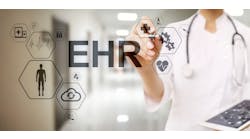More than 85 percent of eligible hospitals are participating in the Medicare and Medicaid EHR Incentive Programs, and more than 75 percent have received incentive payments for meaningfully using electronic health record (EHR) technology as of March 2013, according to a fact sheet released by the Centers for Medicare & Medicaid Services (CMS) and the Office of the National Coordinator for Health Information Technology (ONC).
In 2009, the Health Information Technology for Economic and Clinical Health (HITECH) Act, a part of the Recovery Act, created the Medicare and Medicaid EHR Incentive Programs to promote the adoption of EHRs in support of the ultimate goals of improving the quality of patient care and reducing health costs. Through this program, eligible hospitals and doctors earn incentives by demonstrating meaningful use of certified technology.
In addition to providing incentive payments, the HITECH Act calls for assistance and technical support to help providers implement EHRs, enables coordination within and among states to support the implementation of EHRs, and develops a properly trained health IT workforce to support providers in becoming meaningful users of certified EHRs.
Survey data also showed that the HITECH Act has dramatically accelerated providers’ use of key health IT capabilities nationwide:
- E-Prescribing: Office-based physicians’ use of e-prescribing has increased from 0.8 percent in December 2006 to 53 percent through January 2013, and more than 94 percent of all pharmacies are now actively e-prescribing.
- Hospitals: between 2008 and 2012, the number of hospitals using EHR systems with certain advanced functionalities that go even beyond the requirements of meaningful use Stage 1 (including physician clinical notes and electronic imaging results) more than quadrupled from 9.4 percent to 44 percent.
- Doctors: Physician adoption of EHR systems with the same advanced functionalities more than doubled between 2008 and 2012, from 17 percent to 40 percent.

